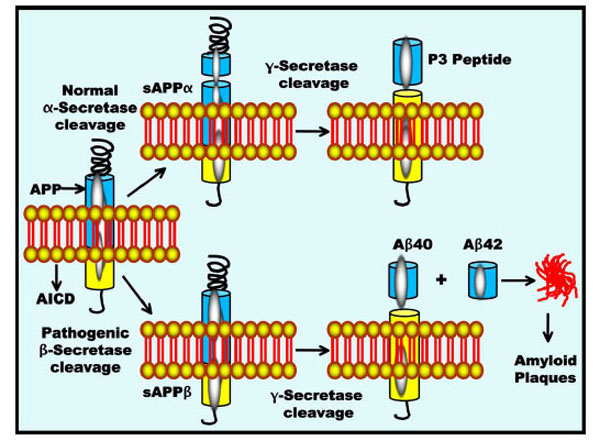Fig. (1) APP processing and Aβ accumulation. APP is metabolised by two competing pathways, the non-pathogenic α-secretase pathway that generates sAPPα and the pathogenic β-secretase pathway that generates sAPPβ. The α-secretase and γ-secretase cleavage releases the p3 peptides, whereas pathogenic β-and γ-secretase cleavage gives rise to Aβ40 and Aβ42 peptide fragments. All carboxy-terminal fragments are substrates for γ-secretase, thus generating the APP intracellular domain (AICD) as well as the secreted peptides p3 and Aβ. Aβ then aggregates into oligomers and subsequently into fibrillary amyloid plaques.

